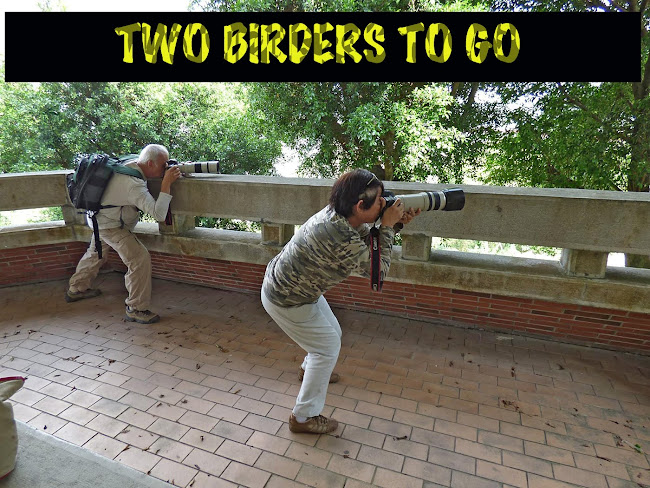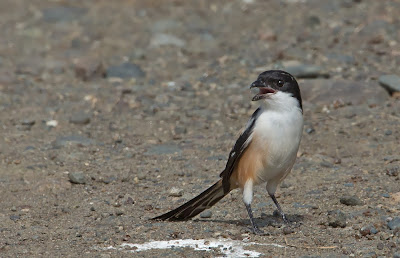My year list of birds seen had been quite stagnant for some time now - not seeing any new (for the year) species lately.
The other day, our friend Jops posted his blog wherein he mentioned that they saw a pair of Java Sparrows at the Main Library of the University of the Philippines (U.P.)!
Cynthia and I had the chance to pay a quick visit to U.P. this morning. Unsure if the uncommon sparrows would still be there, I only brought my 300mm lens. Big mistake! We easily found the Javas but they were way up high at the roof of the library. As Jops observed, they were indeed building a nest because my wife and I saw one with some agoho leaves in its beak.
Aside from the Java Sparrows there were the usual avian denizens of the university campus such as a very noisy Black-naped Oriole.
Of course I had to have a gratuitous shot of the migrant bully - the Brown Shrike.
I wasn't feeling that well so we cut short our birding for the day. At least one more species was added to my year list. I'm happy with that.
Our Loggerhead Shrike Again
1 day ago






























